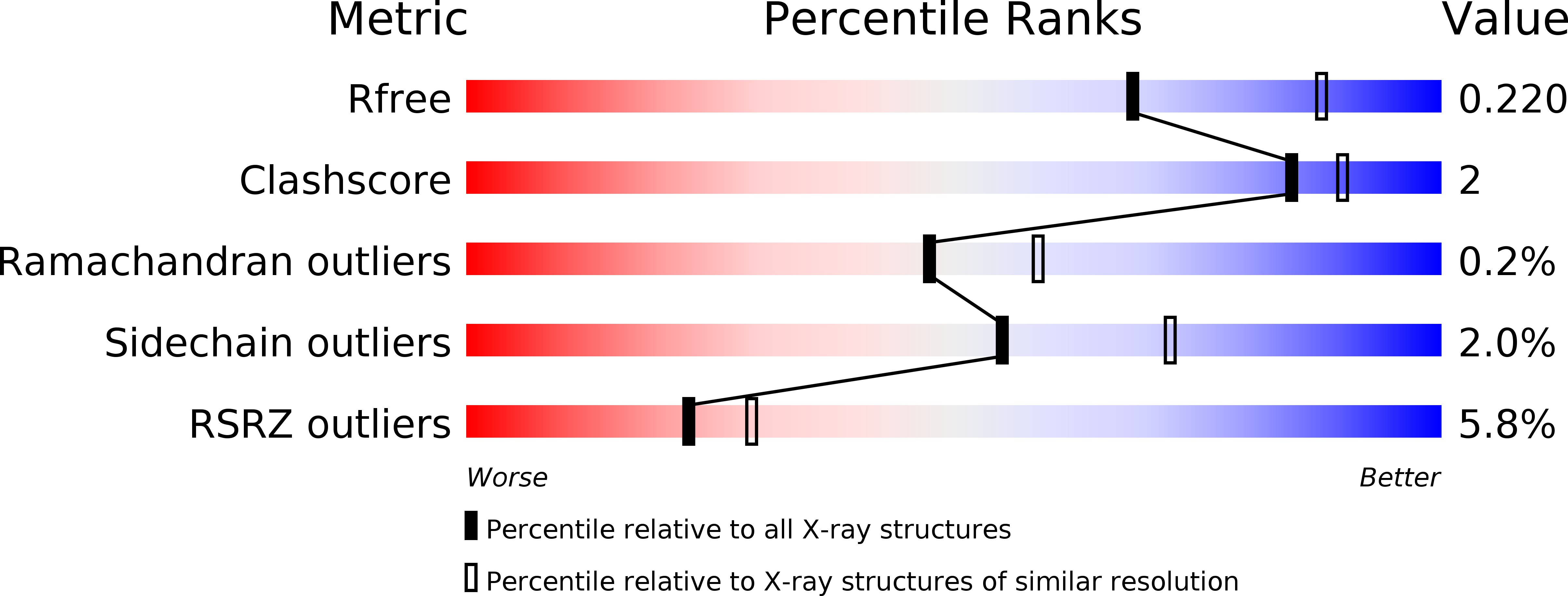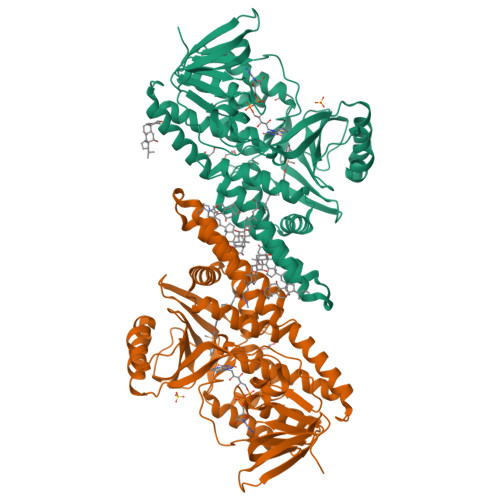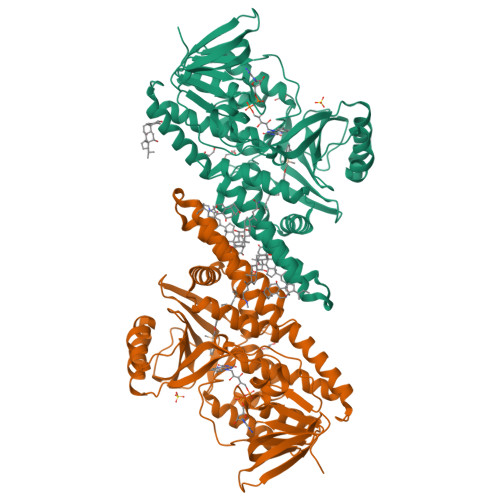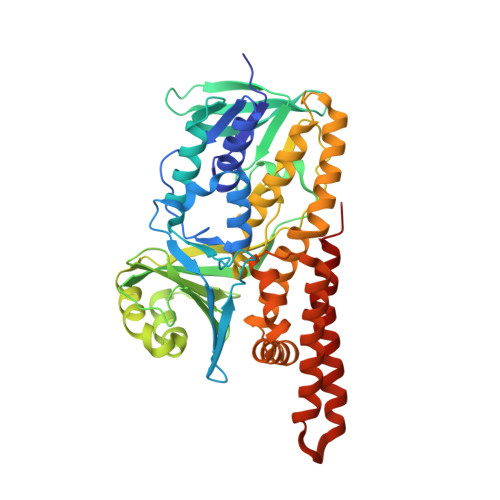Structure and inhibition mechanism of the catalytic domain of human squalene epoxidase.
Padyana, A.K., Gross, S., Jin, L., Cianchetta, G., Narayanaswamy, R., Wang, F., Wang, R., Fang, C., Lv, X., Biller, S.A., Dang, L., Mahoney, C.E., Nagaraja, N., Pirman, D., Sui, Z., Popovici-Muller, J., Smolen, G.A.(2019) Nat Commun 10: 97-97
- PubMed: 30626872
- DOI: https://doi.org/10.1038/s41467-018-07928-x
- Primary Citation of Related Structures:
6C6N, 6C6P, 6C6R - PubMed Abstract:
Squalene epoxidase (SQLE), also known as squalene monooxygenase, catalyzes the stereospecific conversion of squalene to 2,3(S)-oxidosqualene, a key step in cholesterol biosynthesis. SQLE inhibition is targeted for the treatment of hypercholesteremia, cancer, and fungal infections. However, lack of structure-function understanding has hindered further progression of its inhibitors. We have determined the first three-dimensional high-resolution crystal structures of human SQLE catalytic domain with small molecule inhibitors (2.3 Å and 2.5 Å). Comparison with its unliganded state (3.0 Å) reveals conformational rearrangements upon inhibitor binding, thus allowing deeper interpretation of known structure-activity relationships. We use the human SQLE structure to further understand the specificity of terbinafine, an approved agent targeting fungal SQLE, and to provide the structural insights into terbinafine-resistant mutants encountered in the clinic. Collectively, these findings elucidate the structural basis for the specificity of the epoxidation reaction catalyzed by SQLE and enable further rational development of next-generation inhibitors.
Organizational Affiliation:
Agios Pharmaceuticals, 88 Sidney Street, Cambridge, MA, 02139, USA. anil.padyana@agios.com.





















